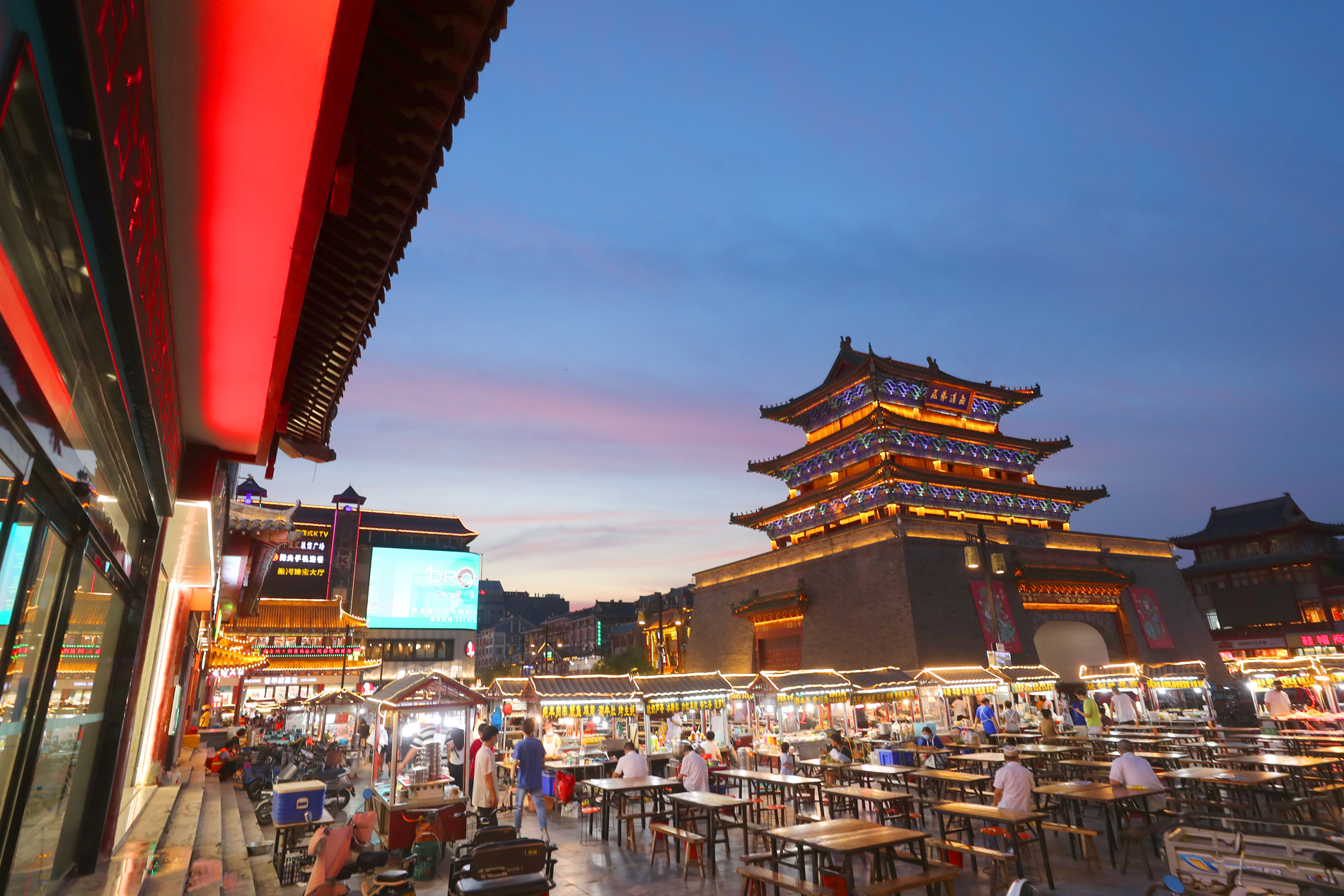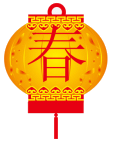
漢德百科全書 | 汉德百科全书
 Henan Sheng-HA
Henan Sheng-HA



Die sogenannte Eisenpagode von Kaifeng (Kaifeng tieta 开封铁塔 Iron Pagoda in Kaifeng) bzw. Eisenpagode des Youguo-Tempels von Kaifeng (chinesisch 开封祐国寺铁塔, Pinyin Kaifeng Youguo si tieta, englisch Youguo Temple Iron Pagoda in Kaifeng), Pagode des Youguo-Tempels (Youguo si ta 祐国寺塔 Youguo Temple Pagoda) oder Glasierte Ziegelpagode des Kaibao-Tempels (Kaibao si liuli ta 开宝寺琉璃塔 Kaibao Glazed Tiles Pagoda) u.a. ist eine Ziegelpagode aus eisenfarbig glasierten Ziegeln in der nordöstlichen Ecke der Stadt Kaifeng der chinesischen Provinz Henan. Sie wurde im 1. Jahr der Huangyou-Zeit (1049) der Nördlichen Song-Dynastie (1049) errichtet.
Weil sie ursprünglich auf dem Gelände des Kaibao-Tempels (Kaibao si 开宝寺) erbaut wurde, wurde sie Pagode des Kaibao-Tempels (Kaibao si ta 开宝寺塔 Kaibao Temple Pagoda) genannt, in der Zeit der Ming-Dynastie erhielt sie ihren heutigen Namen. Sie ist achteckig und hat dreizehn Geschosse, ihre Höhe beträgt 55,08 m.[1] Das Dach lässt sich besteigen.








Kâifêng (Aussprache allerdings eher wie "Kaifong") ist eine mit einer halben Million Einwohner verhältnismässig kleine Stadt und befindet sich wie auch →Luòyáng in der Provinz Hénán. Schon vor Beginn der Tang-Dynastie im 7. Jhd. war die Stadt einmal Hauptstadt. Später, zwischen dem 10. und 12. Jhd., diente sie ebenfalls einigen Kaisern als Hauptstadt.
Die Stadt hatte Zugang zum nahe gelegenen Huang He (Gelber Fluss), und lag damit zwischen den wohlhabenden Städten an der Ostküste und den wichtigen Städten Kâifêng und →Xî'ân im Westen.
Die Stadt hatte um die Jahrtausendwende herum schätzungsweise eine Million Einwohner - mehr als heute. Im Jahre 1644 gab es einen erheblichen Einschnitt: Die Mandschuren bekämpften die Truppen der Ming-Dynastie und rückten immer weiter gen Süden vor. Um die Eroberer zu stoppen, beschloss man die Deiche des Huang He zu öffnen und damit Kâifêng zu opfern. Das hat angeblich ca. 300'000 Einwohnern das Leben gekostet. Dazu muss man wissen, dass der Huang He sich mit seiner enormen Lössfracht ein Bett geschaffen hat, das höher als das Umland liegt: Das Umland ist durch natürliche Dämme geschützt - wenn die allerdings zerstört werden, kommt (kam) es zur Katastrophe.
Heute ist die Stadt angenehm ruhig. Die grossen Parkanlagen und ein altes, gut erhaltenes historisches Zentrum machen es möglich, China einmal anders zu erleben.(Quelle:www.tabibito.de/china/kaifeng.html)
Kaifeng (chinesisch 開封市 / 开封市, Pinyin Kāifēng Shì) ist eine bezirksfreie Stadt in der chinesischen Provinz Henan. Ihr Verwaltungsgebiet hat eine Fläche von 6.247 km² und ca. 4,7 Millionen Einwohner (Zensus 2010). In dem eigentlichen städtischen Siedlungsgebiet von Kaifeng leben 894.142 Menschen (Zensus 2010). Kaifeng liegt am Gelben Fluss. Die Entfernung zu Zhengzhou, der Hauptstadt der Provinz, beträgt etwa 70 Kilometer. Kaifeng ist eine der alten Hauptstädte in der Geschichte Chinas.
开封(英文:Kaifeng)古称老丘、启封、大梁、浚仪、汴京、汴梁等,简称汴,河南省地级市,地处河南省中东部,西与省会郑州市毗邻,东与商丘市相连,南接许昌市和周口市,北隔黄河与新乡市相望。截至2016年,开封市总面积6266平方公里,下辖5个市辖区、4个县,常住454.67万人。
开封迄今已有4100余年的建城史和建都史,先后有夏朝,战国时的魏国,五代时期的后梁、后晋、后汉、后周及北宋相继在此定都,北宋称此为东京开封府。开封是世界上唯一一座城市中轴线从未变动的都城,城摞城遗址在世界考古史和都城史上少有。北宋首都东京开封府更是当时继唐朝首都长安后的世界第一大城市。有着“琪树明霞五凤楼,夷门自古帝王州”、“汴京富丽天下无”的美誉。开封是清明上河图的创作地,有“东京梦华”之美誉。
开封是戏曲之乡,中国第一大地方剧种豫剧发源于此。开封市内五湖四河环绕分布,素有“北方水城”之称。开封是中国优秀旅游城市、中国菊花名 城、中国书法名城,拥有国家5A、4A级旅游景区8家,全国重点文物保护单位19处。中国开封清明文化节 、中国开封菊花文化节吸引著众多海内外游客。
开封是河南省新兴副中心城市、中原城市群核心发展区城市,郑州大都市区核心城市。开封自贸区也是中国(河南)自由贸易试验区三大片区之一。
開封市(かいほうし、簡体字: 开封市; 繁体字: 開封市; ピン音: Kāifēng; ウェード式: K'aifeng)は中華人民共和国河南省東部に位置する地級市。中国でも最も歴史が古い都市の一つであり、北宋の首都であった。11世紀から12世紀にかけて世界最大級の都市であった[1]。
Kaifeng (simplified Chinese: 开封; traditional Chinese: 開封), known previously by several names, is a prefecture-level city in east-central Henan province, China. It is one of the Eight Ancient Capitals of China, for being the capital seven times in history, and is most famous for being the capital of China in the Northern Song dynasty.
There are currently about 5 million people living in its metropolitan area. Located along the southern bank of the Yellow River, it borders the provincial capital of Zhengzhou to the west, Xinxiang to the northwest, Shangqiu to the east, Zhoukou to the southeast, Xuchang to the southwest, and Heze of Shandong to the northeast.
Kaifeng (开封 ; pinyin : Kāifēng), anciennement connu sous le nom de Bianliang (汴梁 ou 汴樑; pinyin: Biànliáng), Bianjing (汴京 ; pinyin: Biànjīng), Daliang (大梁 ou 大樑 ; pinyin: Dàliáng), ou simplement Liang (梁 ou 樑 ; pinyin: Liáng), est une ville-préfecture de l'est de la province du Henan en Chine. Elle fut capitale impériale sous la dynastie Song du Nord (960-1127).
Kaifeng (in cinese: 開封T, 开封S, KāifēngP) è una città-prefettura della Repubblica Popolare Cinese, della provincia dello Henan. Fu una delle capitali storiche della Cina durante alla dinastia Song, che la abbandonò a seguito di un'invasione e per circa 900 anni fu sede di una comunità ebraica, l'unica conosciuta in Cina prima del XIX secolo.
Kaifeng léase Kái-Feng (chino simplificado: 开封市, chino tradicional: 開封市, pinyin: Kāifēngshí) es una ciudad en la provincia de Henan, en la República Popular China. Está situada a orillas del río Amarillo y a unos 70 kilómetros de la capital provincial, Zhengzhou. La ciudad cuenta con una población de casi 5.000.000 de habitantes (2010) que viven en un área de 6444 km².



 Anhui Sheng-AH
Anhui Sheng-AH
 China
China
 Gansu Sheng-GS
Gansu Sheng-GS
 Henan Sheng-HA
Henan Sheng-HA
 Jiangsu Sheng-JS
Jiangsu Sheng-JS
 Shaanxi Sheng-SN
Shaanxi Sheng-SN

 Vacation and Travel
Vacation and Travel
 Xinjiang Uygur Zizhiqu-XJ
Xinjiang Uygur Zizhiqu-XJ






 Architecture
Architecture

 History
History
 Religion
Religion
 International cities
International cities
 World Heritage
World Heritage
 Spring Festival
Spring Festival
 Traditions
Traditions
 Review
Review
 Transport and traffic
Transport and traffic
 Companies
Companies
 Art
Art